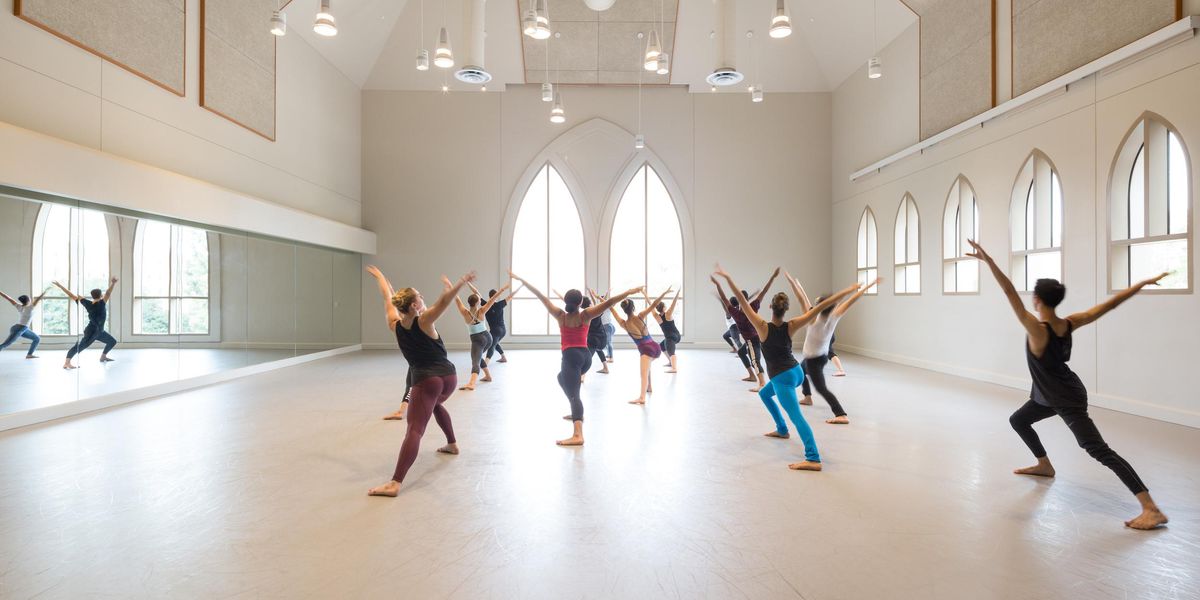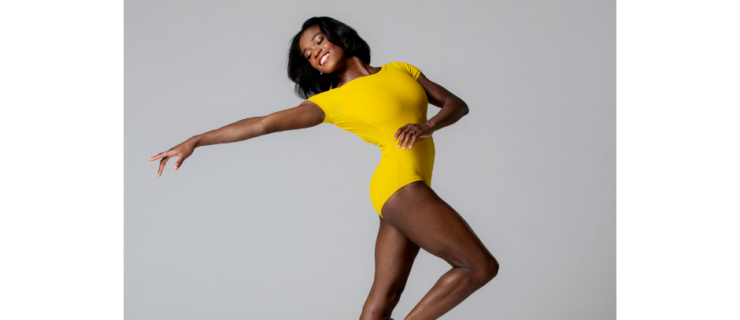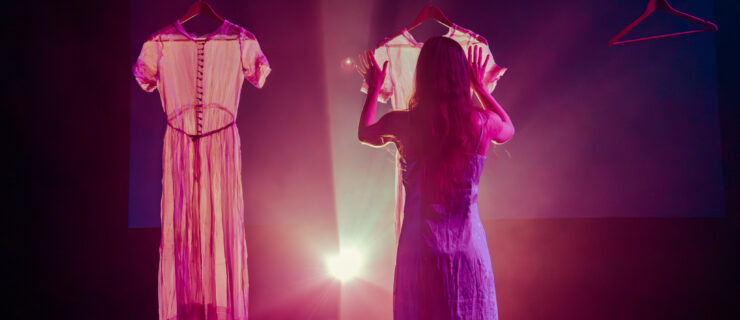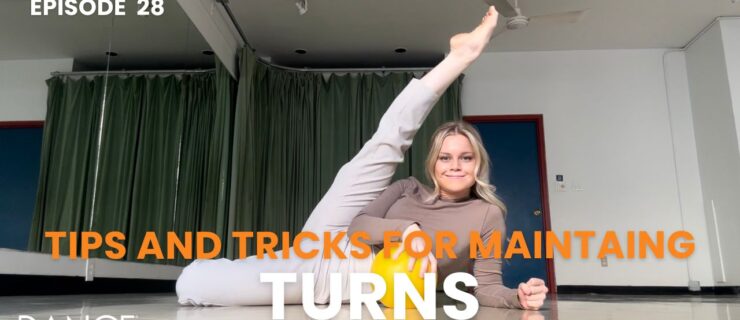"If I Only Knew…"
Five pros reflect on their pre-professional years.
You might find it difficult to imagine that even the most beloved dancers had doubts about their own eventual stardom. But in truth, everyone travels a long way to become a professional dancer, and the journey is filled with challenges, doubts and victories. Here’s what five pros wish they’d known when they were first starting out, and what you can learn from their years of experience.
Lauren Fadeley
Principal, Pennsylvania Ballet
Lauren Fadeley and Ian Hussey in Nicolo Fonte’s Grace Action. Photo by Alexander Iziliaev, courtesy PA Ballet.
Injuries can make you stronger.
“After getting into New York City Ballet at 16, I broke my foot at 18. I wasted a lot of energy worrying and thinking, My life is over. If I’m not a dancer, who am I? I decided to do what other 18-year-olds were doing and go to college at Indiana University. Maybe I made the decision out of fear, but pursuing my education saved my career and made me the dancer I am. I got to work on my technique while figuring out if I wanted to dance professionally again. Obviously, I succeeded in doing just that, but I like knowing I have my degree to fall back on.”
Hyperextension is a blessing—if you use it correctly.
“It’s harder to retrain your muscles later in life, so learn the right way now. I used to sink into my hyperextension to show off my legs. But it changed my posture and built up extra muscle tone in my thighs. Now, I engage my muscles to pull up, so everything comes from a stronger position over the leg. When I see students hyperextended like me, I jump at the chance to show them how to do it right.”
Rubio in a Finding Neverland rehearsal. Photo by Jim Lafferty.
Julius Anthony Rubio
Assistant dance captain and ensemble
member, Finding Neverland
Never take dancing for granted.
“When I was young, my family lived in a homeless shelter for a little less than a year. Sometimes it was hard to see the light at the end of the tunnel. That’s when I started giving everything I had to dance. I had a passion for it and focused on being the very best I could be because dancing made me feel invincible. All that hard work—which never ends—and my heart are what got me to where I am, and I don’t want to be anywhere else.”
Professionalism goes beyond interactions with your boss.
“Handling yourself well under pressure doesn’t just make you look good in front of the choreographer, it helps the entire cast work better. You’ll be in long rehearsals; stress levels will get high and moods will come out—never take it personally. A performer shouldn’t be problematic, so stay positive and professional, even among your peers. The next thing you know, you’ll be working for them or they’ll be working for you.”
Sarah Reich
Founder, Sarah Reich’s Tap Music Project;
Dancer/choreographer, Sole Sisters
Photo by Jeremy Jackson, courtesy SILLAR Management.
If you aren’t landing work, create your own.
“I wish I could have given myself this pep talk before auditions: You are short and Latina, and there aren’t many roles for a hoofer who fits that description, so don’t worry about trying to fit the part. Tap is all about being an individual. If you can do that, people will remember you for future work even if this job doesn’t pan out. That said, I’ve always had an entrepreneurial mind-set. I started a tap club in high school, my first company at 20 years old, and now I have my own band. Collaborations are innovative and inspiring—yet another reason not to ignore the other dancers you meet in auditions in favor of impressing the people at the front of the room.”
Tricks don’t make an artist.
“Find your love for practice, and I’m not talking about tricks! As a kid, I used to think of practice as a chore until I started meeting phenomenal tap dancers who practiced constantly. Now I spend hours improvising a cappella to perfect my sound and voice as a tapper—five-count wings on toe stands can wait.”
Maria Kowroski
Principal, New York City Ballet
Kowroski as Odette. Photo by Paul Kolnik, courtesy NYCB.
Don’t apologize for your accomplishments.
“Advancing quickly is a great honor, but it can be lonely. When I first started at NYCB, there were 120 people in the company, and I was scared to death. A few weeks in, I was called into a big rehearsal to dance Hippolyta in A Midsummer Night’s Dream. I got a lot of looks. It’s hard to go up the ranks quickly, and I spent a lot of time thinking people would have more respect for me if it took longer, if I’d proven that I’d worked hard. It was hard to appreciate the attention. I had to remind myself that this is my dream and it’s happening right now, and I am working my butt off. The truth is that everyone wants that to happen to them. It’s a competitive world, so work hard, be kind, challenge yourself and don’t give in to jealous pressures. Getting great reviews or your picture in the paper won’t last forever. As I get older, it makes me smile when I see a young dancer rising quickly—it’s her time.”
A little diversity goes a long way.
“I grew up with Joffrey training and was a sponge for Balanchine because I loved the speed and challenge. But given my facility, I wish I’d been introduced earlier to the Vaganova
method. Alina Cojocaru, with the English National Ballet, once told me she thought training in three different styles really helped her succeed. For any dancer starting out, taking jazz, modern, acting or learning musical terminology will open you up and give you more background to grow as an artist. Plus, it’s good for your brain!”
Josie G. Sadan
Dancer, ODC/Dance
Photo by Dino Corti, courtesy ODC/Dance.
Focus on what you have to offer.
“Growing up, most of my training was in ballet, where there is a pretty specific ideal that, frankly, I didn’t match. I saw classmates who had more turnout and higher legs, and I was always working hard to get that. I finally realized that I have strength, power and an interesting quality to my movement, and I don’t need to have what classical ballet requires. I wished I’d dropped that hang-up sooner, because when I did, I was able to grow in my ballet technique and figure out how to use my training as a service to the type of movement I wanted to do. I could have spent less time trying to have a perfect 180-degree extension—you only need so many of those dancers onstage, and I don’t have to be one of them.”
Make everything your own.
“Most of the time, you just have to get the gist of the choreography and run it through your own lens, not mimic the choreographer perfectly. As a less experienced dancer, I didn’t realize that. I was so concerned with getting everything exactly right—the angles, the attitude. It was information overload. Take time to figure out what you can bring to each movement, and define yourself in the details. It took me a long time to learn how to do that.”




